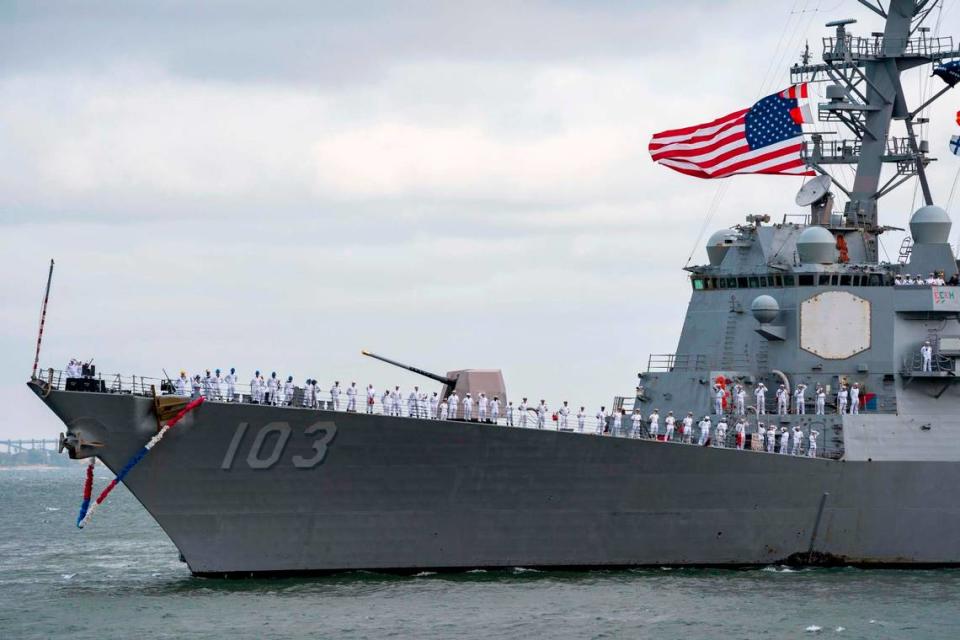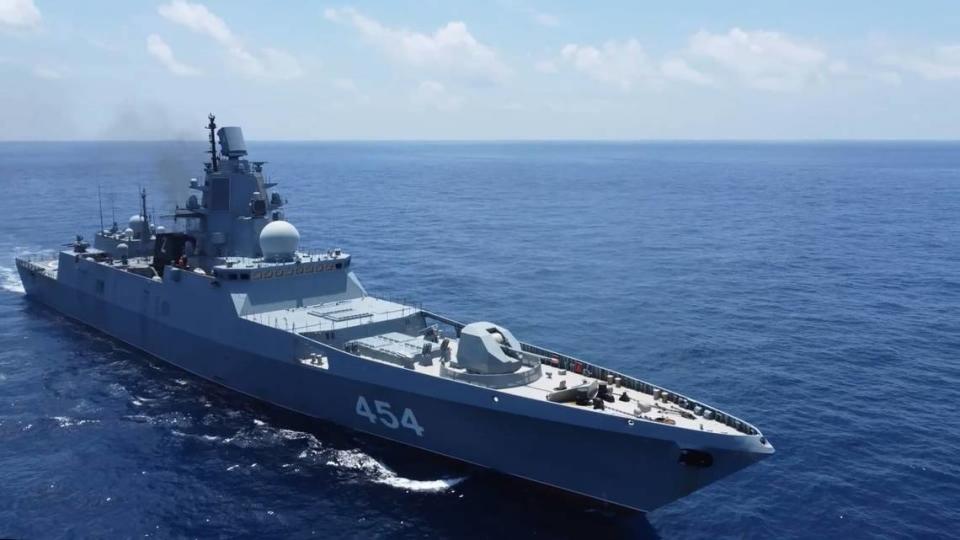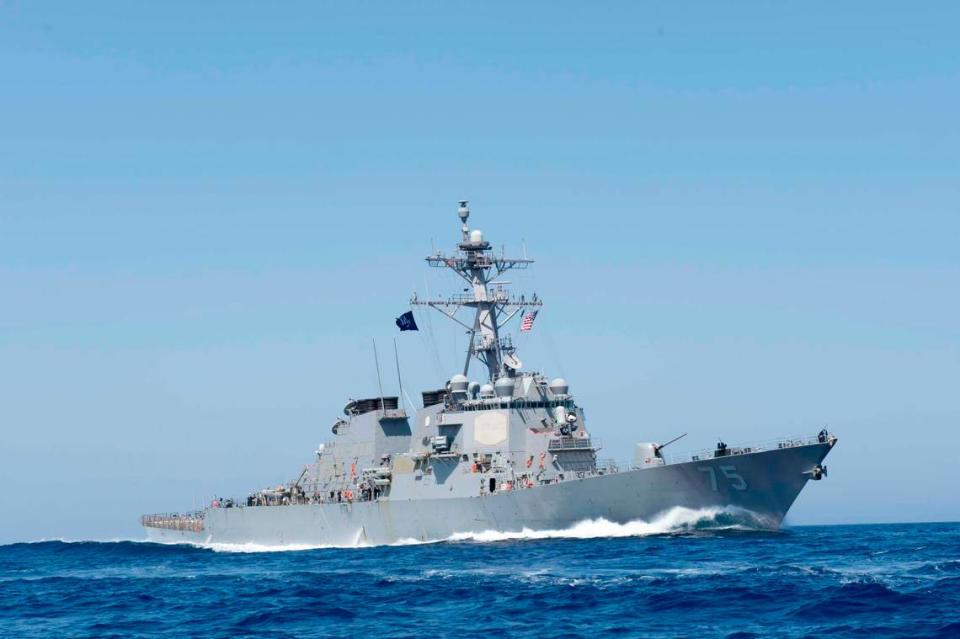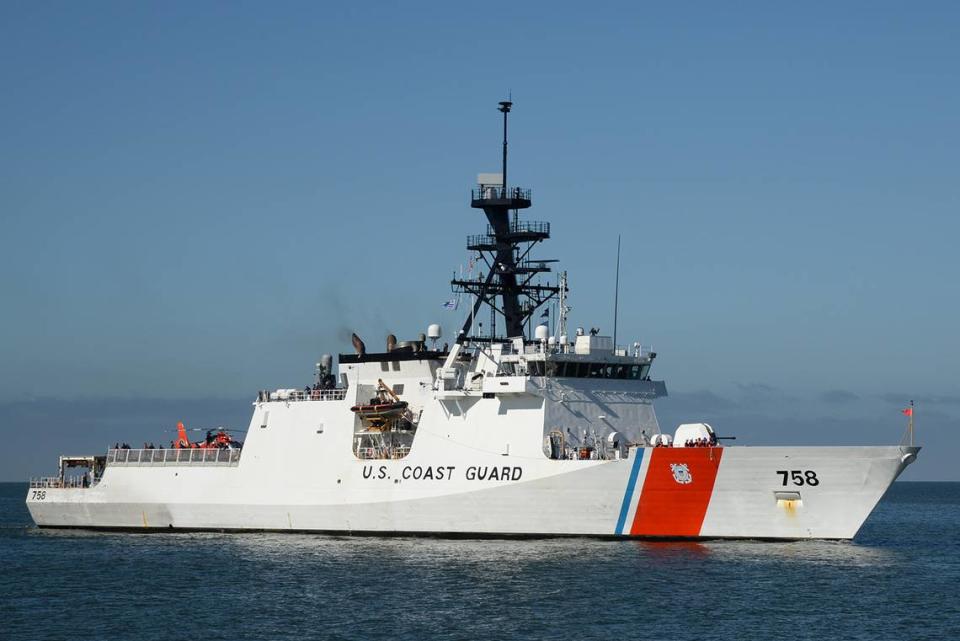The U.S. Navy deployed warships and aircraft to track a Russian naval flotilla after the Russian ships sailed within 30 miles of the South Florida coast on Tuesday, U.S. officials told McClatchy and the Miami Herald .
Last week, Moscow sent three ships and a nuclear-powered submarine in the Caribbean for what U.S. officials say will be a series of extensive air and naval military exercises — the first of their kind in at least five years.
The exercises began Tuesday in the Atlantic, the Russian Defense Ministry said in a statement, with its hypersonic-capable frigate and nuclear-capable submarine simulating a strike on a group of enemy ships. It is unclear whether the frigate is armed with hypersonic missiles, but U.S. intelligence has estimated that none of the Russian ships carry nuclear weapons.


While the Biden administration has said it is not concerned about Russian activity, it has nonetheless authorized the deployment of three powerful destroyers and an underwater reconnaissance aircraft to the region, a U.S. Naval Command official said Tuesday. North to McClatchy and the Herald.
“In accordance with standard procedures, we are actively monitoring Russian ships as they transit the Atlantic Ocean into international waters,” the NORTHCOM official said. “The air and maritime assets of the United States Northern Command conducted operations to ensure the defense of the United States and Canada. “Russian deployments are part of routine naval activity that pose no direct threat or concern to the United States.”
The US deployment includes three guided-missile destroyers – the USS Truxtun, the USS Donald Cook and the USS Delbert D. Black – as well as a Coast Guard cutter, the Stone, and a Boeing P-8 maritime patrol aircraft .
Last week, confirming Russia’s deployment plansa senior administration official said the U.S. Navy would adopt “whatever posture is necessary to track and monitor” their activity as the exercises unfold.


An additional stopover by Russian ships is possible in Venezuela, several officials said. The Biden administration plans for these exercises to culminate with Russian-led global naval exercises that will include deployments from the Caribbean to the South Pacific.
The Cuban Revolutionary Armed Forces said last week that the Russian guided-missile frigate Admiral Gorshkov, the nuclear submarine Kazan, the oil tanker Pashin and the rescue tugboat Nikolai Chiker would arrive on June 12 and stay for a week.


Users of the site marinetraffic.com have monitored the position of American and Russian ships in recent days. According to the website, the Russian sea rescue tugboat Nikolay Chiker was positioned at 26 nautical miles of Key Largo on Tuesday morning.
U.S. officials acknowledged that the Russian ships remained nearby, while emphasizing that they remained in international waters.
“We are closely monitoring ship trajectories,” a U.S. official said Tuesday. “At no time did the ships or submarines pose a direct threat to the United States. »
Global deployments
The port of Havana will be particularly busy this week.
In addition to the Russian warships and the nuclear submarine expected on Wednesday, the HMCS Margaret Brooke, a patrol boat of the Royal Canadian Navy, will arrive on Friday and will remain there until the 17th, the scheduled departure date of the Russian ships.
The Communist Party newspaper Granma said the ship’s visit highlights the “50th anniversary of cooperative ties” with Canada and the “bilateral collaboration for maintaining peace in our region.” There is no mention of the simultaneous presence of Russian naval assets in the port.
A Venezuelan training ship, the AB Simón Bolívar, will also visit Santiago de Cuba, the island’s second largest city, between June 15 and 19.




